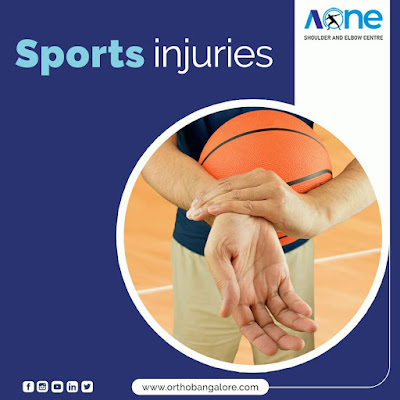Impingement Syndrome is a medical condition, where the bones of the shoulder intrude or ‘impinge’ into the tendons or the bursa; the liquid filled, bag like structures, acting as a shock absorbing medium between the bones and muscles around a joint. The human shoulder joint is the most common joint that is affected by this condition.
Signs & Symptoms:
Persistent pain, along with loss of movement at the joint and a feeling of weakness, are the most common signs. Any overhead movement of the shoulder or even lying down and putting weight on the shoulder, can cause severe pain. Other symptoms include a grinding, popping sound on moving the joint. If left untreated, it causes inflammation of the bursa and the rotator cuff tendons, and even leads to tearing of the tendons.
Causes:
Age. People above 50 and older are more likely to have this condition. Though younger people involved in movement intensive sporting activities are also susceptible.
Any injury caused to the shoulder area.
Muscle imbalance. All muscles have a mechanical balance for their optimal function and when this is disturbed, i.e. muscles are too loose or too tight, problems start.
Neurological problems. Current studies have revealed that neural structures and mechanisms and anything that disturbs them, contribute to pain and shoulder dysfunction.
Bone spurs i.e. projections that develop along the bone structure, usually in the joints, can rub into the surrounding tissue causing irritation and inflammation.
Treatment:
The most important objective here should be pain reduction and restoration of functionality, taking into account the age, general health and activity level of the patient. Treatment is divided into two types, Non-Surgical and Surgical, with preference given to non-surgical.
Non-Surgical:
Rest - complete rest and limited activities of the shoulder and the arm.
Non-Steroidal Medication - to reduce inflammation and pain and encourage healing.
Physical Therapy - to improve the range of motion of the affected area by means of gentle exercises like stretching relieving stress and pain.
Steroid Treatment - when the above three methods are not successful, doctors may suggest treatment with steroids. This is injected directly into the affected area, usually the bursa, and can relieve the pain.
Stem Cell Treatment - these are cells with the specialised ability to develop into a completely different type of cells. They are extracted from the patient’s body, harvested and injected into the affected area, where they grow and transform into healthy cells, boosting the healing process.
Surgical:
This is a method of last resort when everything else is ineffective. The most common is called Subacromial Decompression, where the idea is to reduce the pressure on the rotator cuff and bursa, by creating space between the shoulder joint and the shoulder blade. This is done using an arthroscope, and in joints with an endoscope.
Visit Us: orthobangalore.com
Blog reviewed by: Dr. Banarji B.H
Mail us: bans75@yahoo.com
Book appointment: orthobangalore.com/book-appointment



















